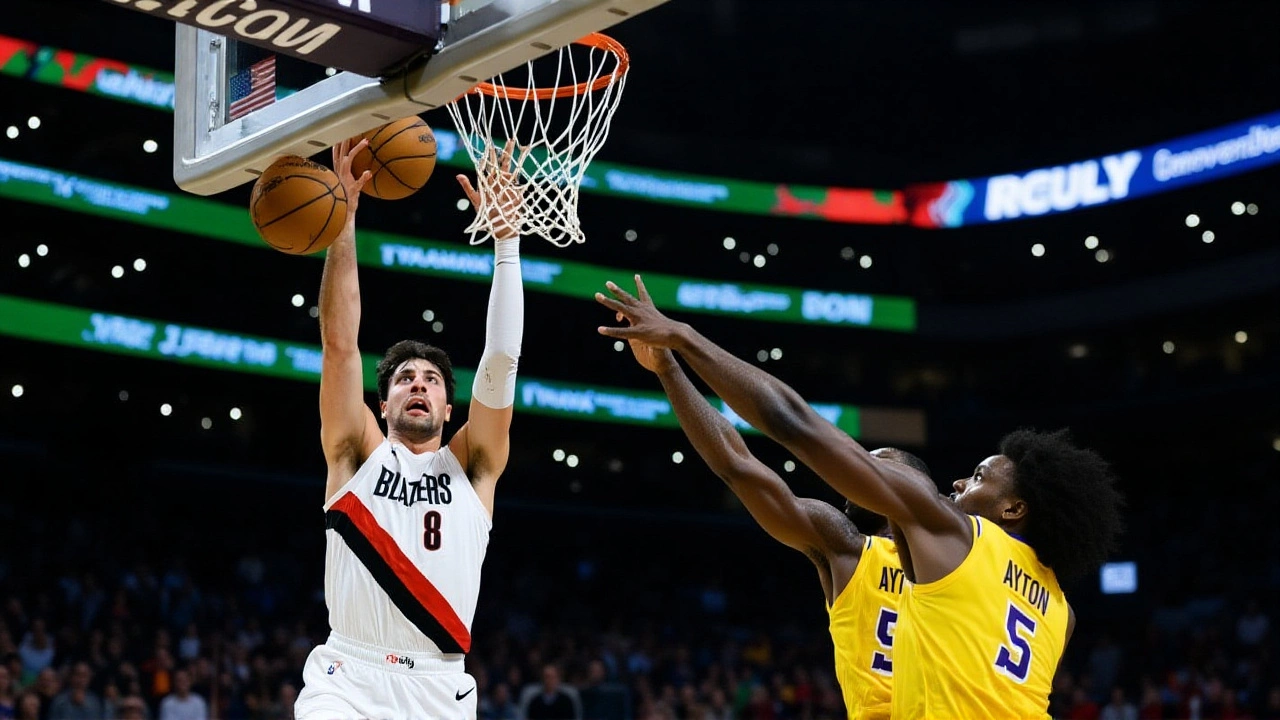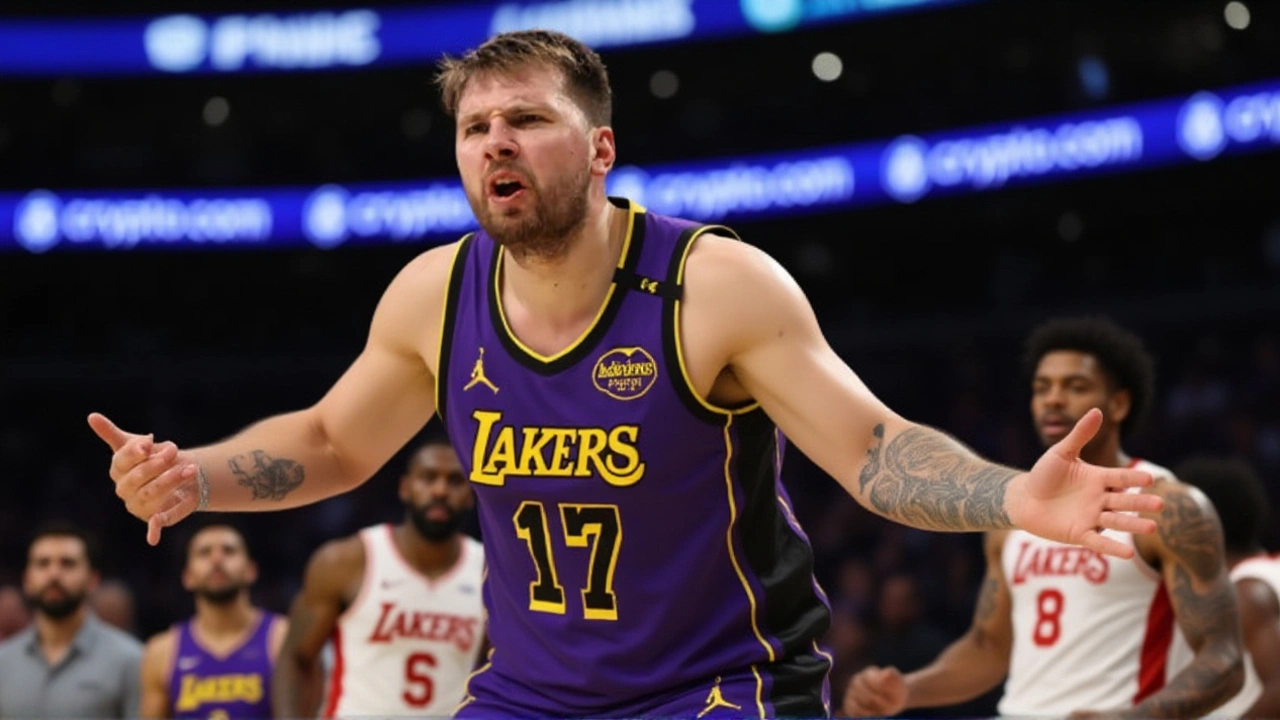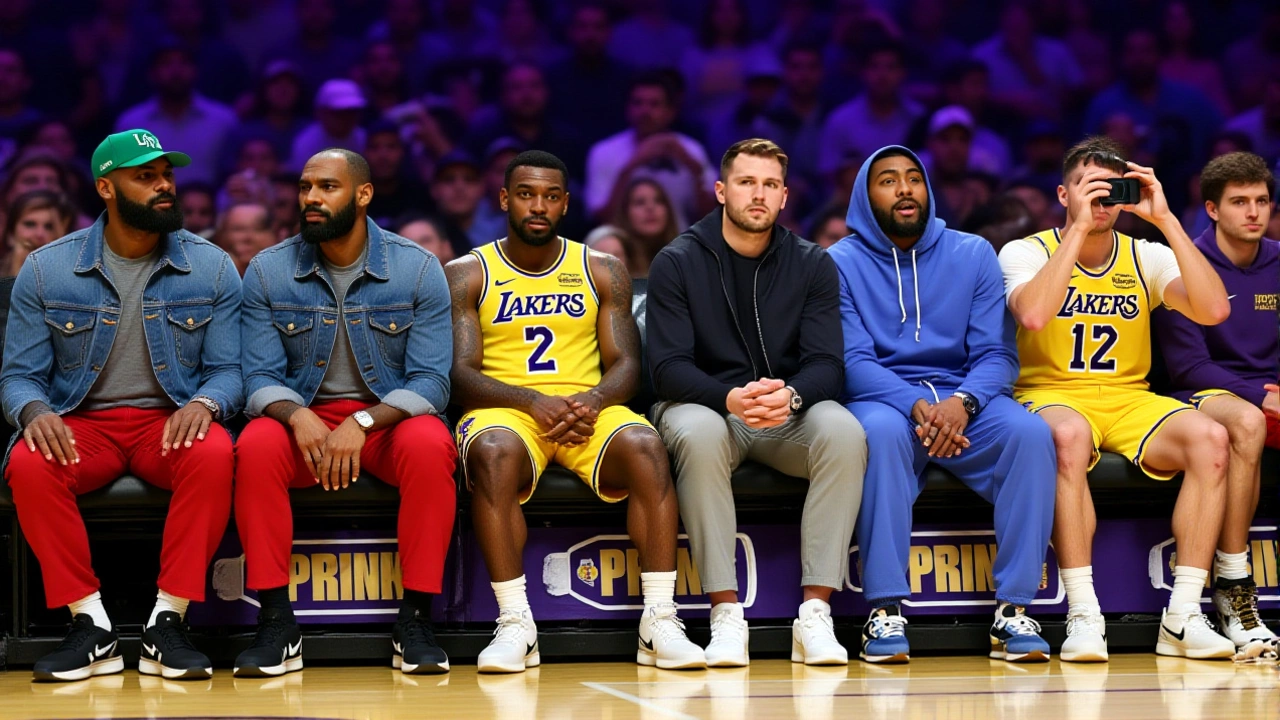- 0
With 0.7 seconds left and the crowd on its feet, Austin Reaves caught the inbounds pass near the free-throw line, spun past a lunging defender, and floated in a 12-foot jumper just before the buzzer — sealing a 116-115 win for the Los Angeles Lakers over the Minnesota Timberwolves at Target Center on October 29, 2025. The shot didn’t just win the game. It erased a 20-point fourth-quarter collapse, silenced a roaring Minnesota crowd, and turned what looked like another frustrating Lakers loss into a signature moment in a season already defined by chaos.
A Collapse That Defied Logic
The Lakers led 113-93 with 5:12 remaining — a lead so commanding, even casual fans were reaching for snacks. But then, everything unraveled. The Lakers went scoreless for nearly three minutes. Turnovers piled up. Defensive rotations vanished. Meanwhile, the Timberwolves, led by Jake LaRavia (24 points), began attacking the rim with terrifying efficiency. Anthony Edwards (referred to as "AR" in commentary) slashed through the defense like a blade, and Rudy Gobert, despite a bizarre travel call with "16 steps underneath," dominated the paint on both ends. By the 1:18 mark, Minnesota had clawed back to take a 115-114 lead. The Lakers, missing LeBron James and Gabe Vincent (ankle sprain), looked like a team playing without a heartbeat.
The Final Six Seconds
With six seconds left and the Timberwolves in possession, Anthony Edwards drove into the corner, drew two defenders, and kicked out to a wide-open Jaden McDaniels — who missed a potential game-sealing three. The ball popped loose. The Lakers’ D'Angelo Russell (21 points, 5 rebounds) fought through traffic to tip it to Reaves. The clock ticked down. Reaves, who’d already scored 20 points on a mix of threes and alley-oops to Rui Hachimura, sprinted toward the baseline, caught the inbounds pass with his back to the basket, spun, and released.
It was soft. It was high. It was perfect.
"AR doing what AR does," one commentator said moments before. "Gets into the paint. And all that celebration that the Timberwolves were doing six seconds ago — they’re not doing now."

Who Was Missing? Who Was Left Standing?
The Lakers entered the game at 3-2, one game behind the Golden State Warriors (4-1) in the Pacific Division. But without LeBron and Vincent — the latter sidelined for "a couple of weeks," according to team sources — they were playing with a makeshift backcourt. Nick Smith Jr., a former Charlotte Hornets starter, logged heavy minutes. D'Angelo Russell carried the offense early, banking in a tough shot after securing his fifth rebound. But it was Reaves, a second-year guard who many still see as a role player, who became the hero. His 28-point night included four three-pointers and a clutch putback in the third quarter that briefly steadied the ship.
For Minnesota, LaRavia’s 24 points were a breakout performance. But the team’s inability to close — they’ve now lost two straight — raises questions. They outrebounded the Lakers by 12, held them to 19 fourth-quarter points, and still couldn’t finish. "We had the game," said Anthony Edwards postgame. "We just didn’t believe we could win it until the last second. That’s on us."
What This Means for the Western Conference Race
The win kept the Lakers in the thick of the Pacific Division race. The Warriors still lead, but the Clippers (2-2) and Suns (1-4) are scrambling. Meanwhile, the Timberwolves — now 2-3 — sit fifth in the Northwest, behind the 5-0 Oklahoma City Thunder and the 3-1 Denver Nuggets. Their next game? A home showdown with Oklahoma City on October 31 — a matchup that could define their season. The Lakers, meanwhile, travel to face the 1-4 Phoenix Suns on the same night, hoping to build momentum before their next home game against the Warriors.
Statistically, this game was a mirror of the Lakers’ season: explosive offense, porous defense, and a knack for turning chaos into opportunity. They’ve now won three of their last four games despite missing their two biggest stars. That’s not luck. That’s resilience.

Timeline of the Collapse
- 10:45, 4th quarter: Lakers lead 113-93 — 20-point advantage
- 8:12: Timberwolves go on 9-0 run; lead cut to 113-102
- 5:38: LaRavia hits three-pointer; Lakers lead 113-107
- 3:05: Edwards steals, dunks — 113-111
- 1:18: Gobert tip-in — Timberwolves lead 115-114
- 0:18: Edwards misses three; Lakers regain possession
- 0:07: Reaves hits game-winner
Frequently Asked Questions
How did Austin Reaves go from role player to game-winner in one night?
Reaves, who averaged 11.2 points per game last season, has quietly become the Lakers’ most reliable scorer in LeBron’s absence. His 28-point performance was his career-high, fueled by aggressive drives and improved shot selection. Coaches have praised his decision-making under pressure, and this game may mark his transition from bench contributor to clutch performer. He’s now shooting 47% from deep this season — up from 38% last year.
Why did the Lakers blow a 20-point lead?
Defensive breakdowns, poor shot selection, and a lack of ball movement doomed the Lakers in the fourth. They attempted 18 shots in the final quarter — only five were from beyond the arc — and turned the ball over seven times. Without LeBron or Vincent to stabilize the offense, the team relied too heavily on isolation plays. Minnesota’s size and intensity exposed their lack of depth.
What’s the impact of missing LeBron James and Gabe Vincent?
LeBron’s absence has forced younger players into larger roles, but his leadership and playmaking are irreplaceable. Vincent’s injury — a sprained ankle expected to keep him out for two weeks — removes the team’s best perimeter defender and secondary ball-handler. The Lakers’ bench scoring dropped from 36 to 21 points per game in their last two games without him.
Can the Timberwolves recover after this loss?
They have the talent — Edwards, LaRavia, and Gobert form a dangerous core. But closing out games remains a flaw. They’re 0-3 in games decided by five points or fewer this season. Facing the undefeated Thunder next, they’ll need to fix their late-game execution or risk falling further behind in the Northwest Division race.
Is this a turning point for the Lakers’ season?
It could be. Winning close games without your best player builds chemistry and confidence. Reaves’ heroics, Russell’s steadiness, and Hachimura’s improved defense suggest this team can compete even in adversity. But if they keep giving up 20-point leads, their playoff hopes will hinge on luck — not talent.
How does this game compare to past Lakers comebacks?
It’s the largest fourth-quarter comeback win for the Lakers since 2020, when they erased a 22-point deficit against the Clippers. Only three times since 2015 has a team come back from 20+ points down in the fourth and win — all by teams with elite shooters. Reaves’ shot joins the likes of Kobe’s 81-point game and Magic’s 1987 Finals dagger as a defining Lakers moment — even if it came without the big names.

